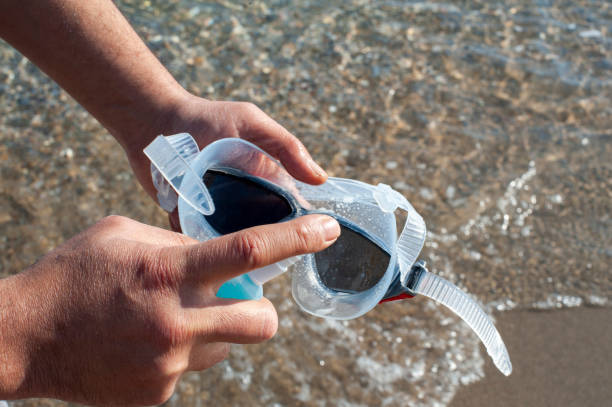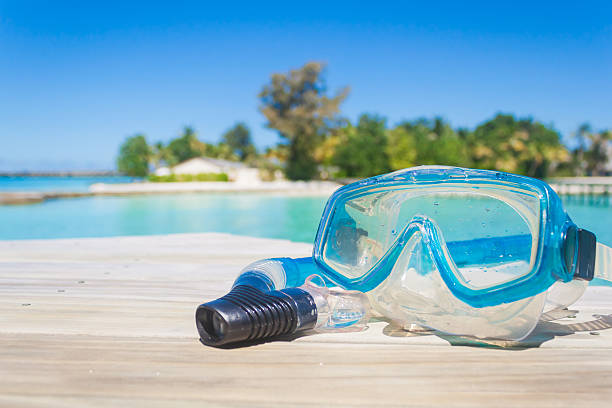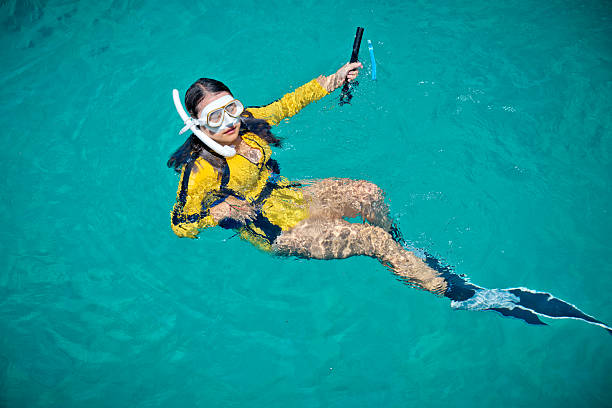스노클링은 수중 세계를 탐험하는 환상적인 방법이지만, 강한 해류와 파도 속에서는 위험할 수 있습니다. 안전하고 즐거운 경험을 위해서는 철저한 준비와 주변 환경을 인지하는 것이 중요합니다. 까다로운 환경에서 스노클링을 안전하게 즐기기 위한 20가지 필수 팁을 소개합니다.
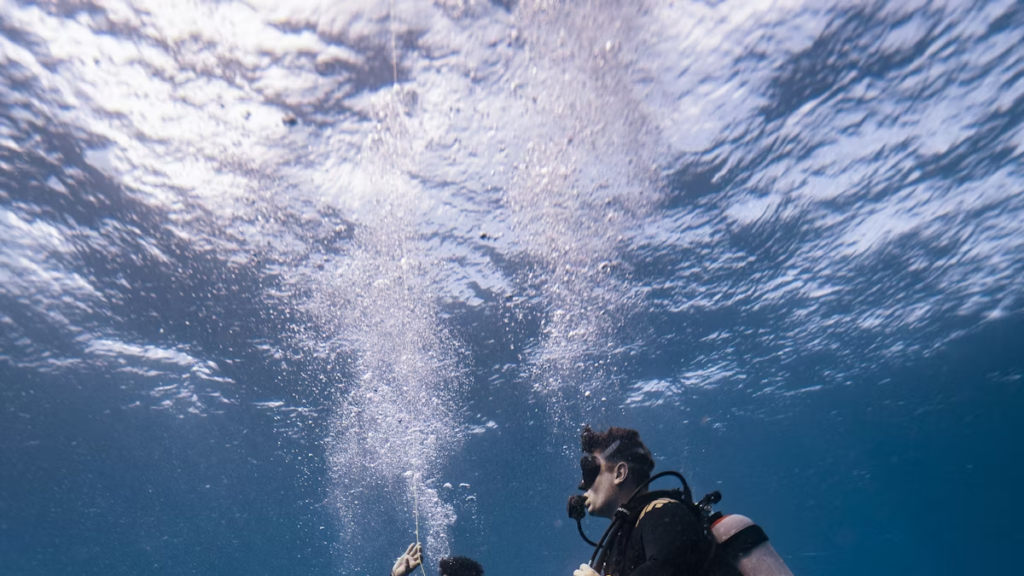
수질 조건 이해
물에 들어가기 전에, 선택한 스노클링 지역의 해류와 파도의 구체적인 특징을 파악해야 합니다. 예를 들어, 하와이 제도는 특히 겨울철에 강력한 이안류로 유명합니다. 반면, 그레이트 배리어 리프는 수심이 비교적 얕지만 조류가 강할 수 있습니다. 또한, 온라인에서 조사하거나, 지역 주민에게 문의하거나, 다이빙 센터에 문의할 수도 있습니다. 어떤 상황이 예상되는지 미리 알아두면 정신적, 육체적으로 준비하는 데 도움이 될 수 있습니다.
진입 및 출구 계획
적절한 입출수 지점을 선택하는 것은 큰 차이를 만들 수 있습니다. 예를 들어, 오아후 섬의 하나우마 만과 같은 곳에서는 지정된 입출수 지점이 명확하게 표시되어 있어 스노클러들이 위험 지역에서 벗어나도록 안내합니다. 바위가 많거나 파도가 심한 곳은 위험할 수 있으므로 피하세요. 처음부터 계획을 잘 세우면 강한 해류에 맞서는 것을 피할 수 있습니다.
지역 조수표 확인
조수 일정은 수질에 상당한 영향을 미칠 수 있습니다. 예를 들어, 몰디브에서는 조수 간만의 차가 매우 커서 성수기에는 강한 해류가 발생할 수 있습니다. 가장 강한 해류를 피하려면 조수 간만에 맞춰 스노클링 여행을 계획하세요. 일반적으로 만조와 간조 사이의 간조 때가 스노클링하기에 가장 안전한 시기입니다.
적절한 스노클링 장비를 사용하세요
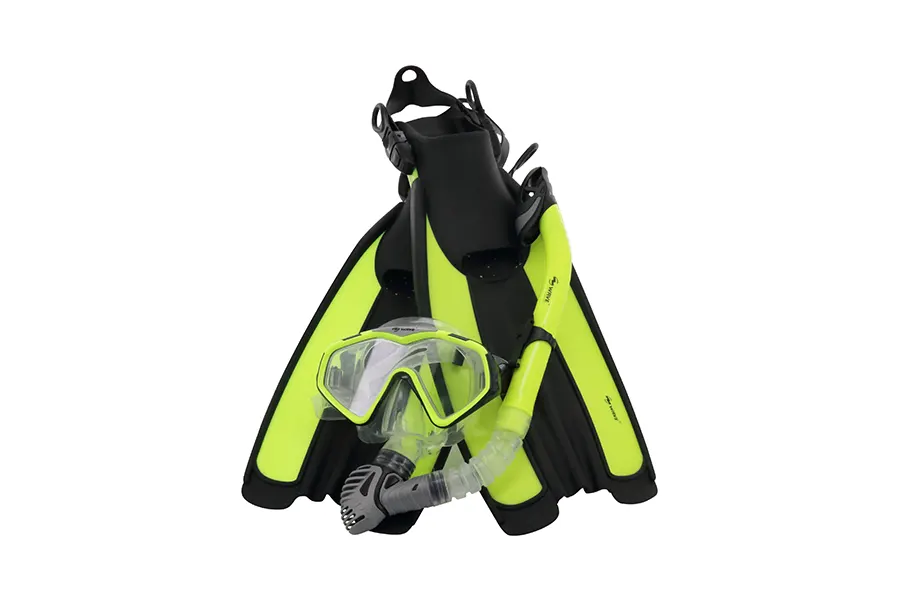
자신에게 맞는 장비를 갖추세요 스노클링 장비 및 장비강한 해류에서는 오리발이 더 나은 추진력을 제공하여 항해를 더 쉽게 해줍니다. 예를 들어 갈라파고스 제도의 숙련된 스노클러들은 지느러미 강한 해류를 관리하기 위해 부력 조끼를 착용하면 부력이 향상되어 수면에 더 적은 힘으로 머물 수 있고, 휴식을 취하고 에너지를 절약하는 데 도움이 됩니다.
해안 가까이에 머물러라
해안 근처에 머무르면 강한 해류와 파도로부터 더 안전하게 보호받을 수 있습니다. 하와이의 샤크스 코브와 같은 곳에서는 해안 가까이에서 스노클링을 하면 특히 초보자에게 안전하고 통제된 환경을 제공합니다. 더 멀리 나갈수록 해류가 강해지므로 육지 가까이에 머무르는 것이 더 안전합니다.
친구와 함께 스노클링
특히 강한 해류에서는 절대 혼자 스노클링을 하지 마세요. 짝은 누군가 위험에 처했을 때 서로에게 힘이 되어 주고 도움을 줄 수 있습니다. 예를 들어, 캘리포니아 라호야 코브와 같은 지역에서는 스노클러들이 종종 두 명씩 짝을 지어 활기찬 해양 생물들을 탐험하며 안전을 보장합니다.
급류를 식별하는 법 배우기
이안류는 특히 위험할 수 있습니다. 물색의 눈에 띄는 차이, 거센 파도가 이는 물길 등 이안류의 징후를 파악하는 법을 배우세요. 예를 들어, 플로리다 해변에는 수영과 스노클링객의 안전을 위해 이안류 상황을 알려주는 표지판과 깃발이 설치되어 있는 경우가 많습니다.
해안과 평행하게 수영하세요
이안류에 갇히더라도 당황하지 마세요. 해류를 거슬러 수영하는 대신 해안과 평행하게 수영하세요. 예를 들어, 호주의 인명 구조원들은 이안류의 영향을 피하기 위해 평행하게 수영하라고 종종 조언합니다. 해류에서 벗어나면 더 쉽게 해안으로 돌아올 수 있습니다.
침착하게 떠다니세요
강한 해류에 맞서 싸우고 있다면, 등을 대고 물에 떠서 에너지를 아껴보세요. 이렇게 하면 다음 행동을 생각하는 동안 침착함을 유지하고 숨을 고르는 데 도움이 될 수 있습니다. 호주 본다이 비치와 같은 곳에서는 인명 구조원들이 강한 해류에 갇혔을 때 생존 기술로 물에 떠 있는 것을 권장합니다.
자연적 특징을 대피소로 활용하세요
바위, 암초, 그리고 기타 자연적 특징은 강한 파도와 해류를 막아주는 장벽이 될 수 있습니다. 예를 들어, 필리핀 엘니도에서는 스노클러들이 강한 파도와 해류를 피하기 위해 석회암 절벽과 산호초를 피난처로 삼는 경우가 많습니다. 이러한 지형을 활용하여 절벽 뒤에 자리를 잡고 잠시 휴식을 취하세요.
파도 아래로 오리 다이빙
다가오는 파도에 직면했을 때는 파도 위로 헤엄치려고 하지 말고 아래로 다이빙하세요. 이 기술은 위치를 유지하고 파도에 밀려나는 것을 방지하는 데 도움이 됩니다. 예를 들어, 하와이 마우이의 서퍼와 스노클러들은 덕 다이빙을 사용하여 파도를 효율적으로 헤쳐 나갑니다.
지느러미로 차기
강한 해류에서 오리발은 최고의 친구입니다. 물살을 가르려면 강하고 꾸준한 킥을 사용하세요. 예를 들어, 멕시코 코수멜의 강한 해류에서 다이버들은 추진력과 제어력을 위해 오리발에 크게 의존합니다. 오리발은 제어력을 높이고 더 효율적으로 움직이는 데 도움이 됩니다.
자신의 속도를 유지하세요
탈진을 예방하려면 일정한 속도를 유지하세요. 갑작스럽거나 당황한 움직임은 빠르게 지치게 하여 해류에 대처하기 어렵게 만들 수 있습니다. 시간을 들여 편안하게 수영하세요. 홍해와 같은 지역의 숙련된 스노클러들은 속도를 조절하는 것이 더 오래 수영할 수 있는 에너지를 보존하는 데 도움이 된다는 것을 알고 있습니다.
에디를 찾아보세요
소용돌이는 바위나 암초와 같은 장애물에 의해 형성된 잔잔한 수역입니다. 이러한 지점을 활용하여 휴식을 취하거나 더 쉽게 탐색할 수 있습니다. 갈라파고스 제도와 같은 곳에서는 스노클러들이 화산암에 의해 형성된 소용돌이를 이용하여 휴식을 취하고 강한 해류를 피하는 경우가 많습니다.
지속적으로 자신의 위치를 모니터링하세요
해안과 랜드마크를 기준으로 자신의 위치를 정기적으로 확인하세요. 이렇게 하면 방향을 유지하고 출발 지점이나 안전 구역에서 너무 멀리 벗어나지 않도록 할 수 있습니다. 예를 들어, 태국 시밀란 섬의 스노클러들은 강한 해류나 선박 통행 구역으로 빠지지 않도록 자신의 위치를 주의 깊게 살핍니다.
드리프트 스노클링 활용
드리프트 스노클링은 미리 정해진 경로를 따라 해류에 몸을 맡기는 것입니다. 적은 노력으로 더 넓은 지역을 탐험할 수 있는 좋은 방법입니다. 보네르와 같은 곳에서는 꾸준한 해류가 산호초를 따라 스노클러들을 이끌어 주기 때문에 드리프트 스노클링이 인기가 많습니다. 단, 위험한 곳에 빠지지 않으려면 물에서 나올 위치를 미리 알아두는 것이 좋습니다.
물속에 낮게 머물러라
몸을 수평으로 수면에 가까이 유지하면 해류에 대한 저항을 줄일 수 있습니다. 이 자세는 더 효율적으로, 그리고 더 적은 힘으로 움직일 수 있도록 도와줍니다. 예를 들어, 바하마에서는 스노클러들이 산호초 위를 편안하게 미끄러지듯 이동하기 위해 이 자세를 취합니다.
비상 신호 연습
비상 수신호를 배우고 연습하세요. 호루라기를 휴대하면 도움이 필요할 때 친구나 근처 보트에 알리는 데 도움이 될 수 있습니다. 비상 상황에서는 빠르고 효과적으로 소통하는 것이 매우 중요합니다. 하나우마 만처럼 사람이 많은 스노클링 장소에서는 호루라기를 휴대하고 수신호를 아는 것만으로도 큰 도움이 될 수 있습니다.
보트 교통에 주의하세요
특히 파도가 거세질 때 보트 통행이 잦은 지역은 피하십시오. 보트는 스노클러를 식별하기 어려워 위험한 상황으로 이어질 수 있습니다. 키웨스트와 같은 곳에서는 보트와의 충돌을 피하기 위해 지정된 구역에만 머무르는 것이 좋습니다.
갑작스러운 변화에 대비하세요
수중 상황은 급변할 수 있습니다. 갑작스러운 해류와 파도 변화에 대비하고, 필요시 신속하게 물 밖으로 나갈 수 있는 계획을 항상 세워 두십시오. 카리브해와 같은 지역에서는 갑작스러운 기상 변화가 흔하므로, 미리 대비하는 것이 안전을 유지하는 데 도움이 될 수 있습니다.
결론
강한 해류와 파도 속에서 스노클링을 하는 것은 스릴 넘치는 경험이 될 수 있지만, 신중한 계획과 주의가 필요합니다. 이 20가지 팁을 따르면 불필요한 위험 없이 안전을 강화하고 수중 세계의 아름다움을 즐길 수 있습니다. 항상 안전을 최우선으로 생각하고 바다는 예측할 수 없다는 것을 기억하세요. 즐거운 스노클링 되세요!
자주 묻는 질문
Q1: 급류에 휩쓸리면 어떻게 해야 하나요?
이안류에 갇히면 침착함을 유지하고, 에너지를 보존하기 위해 물에 떠서 해안과 평행하게 수영하여 해류에서 벗어나십시오. 그런 다음 해안으로 돌아오십시오.
Q2: 급류를 어떻게 식별할 수 있나요?
급류는 물의 색깔이 눈에 띄게 다르고, 휘몰아치는 물길이나, 거품이나 잔물결이 바다 쪽으로 움직이는 모습을 흔히 보입니다.
Q3: 친구와 함께 스노클링을 하는 것이 왜 중요한가요?
친구와 함께 스노클링을 하면 서로 지지와 도움을 주고받을 수 있고, 누군가 어려움이나 긴급 상황에 처했을 때 안전성이 향상됩니다.
Q4: 강한 해류를 피하기 위해 스노클링을 하기 가장 좋은 시기는 언제인가요?
스노클링을 하기에 가장 좋은 시기는 썰물 때, 즉 만조와 썰물 사이의 기간으로, 이때가 일반적으로 해류가 가장 약합니다.
Q5: 강한 해류에서 스노클링을 하려면 어떤 장비가 필수인가요?
필수 장비로는 추진력을 높여주는 핀, 부력을 높여주는 부력 조끼, 신호를 보내는 호루라기, 잘 맞는 마스크와 스노클이 있습니다.
